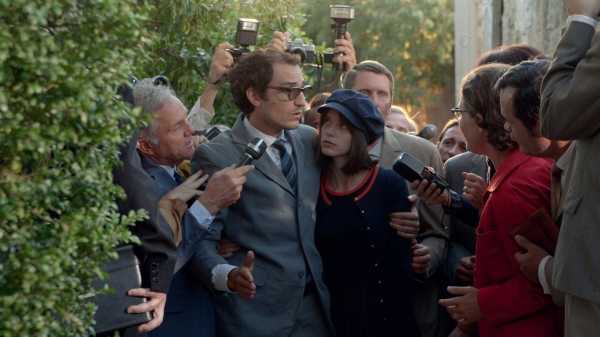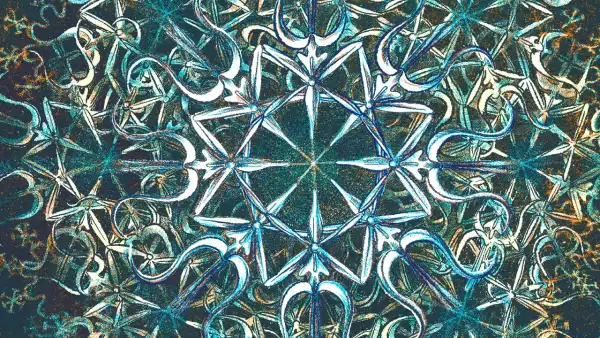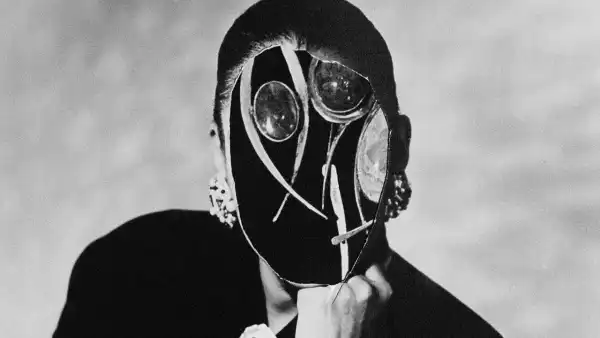
Imagination in the movie involves a comprehensive extension of the art form that expands the scope of experience and ideas. (The exemplary Director of this kind in recent generations, Jean-Luc Godard.) But there is a more modest form of imagination that within the reach of more of Directors: the practical imagination that, in the familiar modes of narration, considers the symbols from quasi-documentary, journalistic curiosity and sympathy. It’s kind of a fantasy that was available for French Director Michel Hazanavicius when he did, “Godard Mon Amour,” a new bio-pic à DEUX on Godard (played by Louis Garrel) and his second wife, actress Anne Wiazemsky (Stacy Martin), established in 1967 and 1968, and their relationship deepened and got corrupted. To make a movie, Hazanavicius adapted a couple of memories Wiazemsky—“une year studieuse” (”scientist of the year”), 2012, “UN après” (”the later year”), 2014—mercilessly filled with candid observations about her own life and the lives of the couple. (They were not translated into English.) On the pages of the book Wiazemsky, Hazanavicius transferred all materials to the deep, classic bio-pic unless he went to the books with respect.
No such luck. In “Hollywood Mon Amour” (which took place at the Cannes film festival in may and opens Friday), Hazanavicius not so much to adapt Wiazemsky memoir how to empty them and plundered the book for the anecdotal sketches of the novel, which he detaches from their environment, to minimize intellectual fervor and historical relevance. Instead, the Director (who is known only because the “artist”) carries out its discreet and casually imagination, rapidly and abundantly, the elements of straightforward narrative observations Wiazemsky. He adorns the movie with a Cutesy parody of a Godard’s films from the sixties; these tricks can turn an otherwise ordinary narrative fabric, as if to say that he had seen in the movies, but without any indication that he has absorbed their substance and their meaning. In addition, it fits the characters Godard and Wiazemsky as objects of ridicule, Comedy and the court. He filmed them in the Nude (especially Wiazemsky), and if you do it with a coy wink from behind the camera. It shows how they have sex (either superficial or preposterous, as when Godard raises his head to talk about politics, going down on Wiazemsky). He toys with their lives as if seeking to dominate them to vampirize their experience, their talent, and even their status—all this is in stark contrast with the self-revealing, self-deprecating, confessional power of Godard films and Wiazemsky’s memoirs and speeches.
The film focuses on a couple’s relationship from the beginning of 1967, when they worked together on the film “La Chinese” until the summer of 1968, when they were apocalyptic dispute in Rome during Wiazemsky was starring in another Director in the film. The dramatic arc of “Hollywood Mon Amour” is determined by the shift in the career of Godard. When he and Wiazemsky the relationship began, in the summer of 1966, he became interested in leftist ideologies, in particular Maoism, which, during the Chinese cultural revolution, and gained currency in Paris among the young intellectual leftist students as a more radical alternative to the Pro-Soviet line of the French Communist party. As the interests of Godard kristallizuetsya around politics, he lost confidence and interest in his film career and plans to abandon the industry in favor of militant films made independently. (The events of may 1968, in which they both Godard and Wiazemsky were active participants in, pushed the Director on his film career and political activism.) Wiazemsky, no Maoist was interested in the film, his career, and was interested in too—and work with Godard, she didn’t have, or want, plenty of space in the film that now he intended to do. But the sharper and more painful conflicts that set the pair apart, and one that Hazanavicius emphasizes in his film, was a typical romantic one: Wiazemsky, in his books, depicts Godard as, at times, selfish, demanding, cruel, caustic, even emotionally cruel to her (and to others), and the final crisis in their relationship was caused by his mad and furious jealousy. The main theme of “Hollywood Mon Amour” is that Godard is not very nice Wiazemsky—who, largely, right.
More “Hollywood Mon Amour” did not bother to offer a rich range of activities the couple together, not to mention the constant and significant works that Wiazemsky was doing on their own, in addition to Godard, even to the end of the film’s dramatic crisis. In 1965, at the age of eighteen years, Wiazemsky starred in the film Robert Bresson. At nineteen she began her relationship with Godard, and then played a major role in one of his films. In the twenty years she was married to Godard; she interned as a photographer for another film by Francois Truffaut, and worked as a Photographer for another major French production, communicated with Jeanne Moreau, who starred with Terence Stampa in the film by pier Paolo Pasolini. Weeks after she turned twenty-one, she starred in the movie together with Jacques Brel; during the protests and discussions held in may 1968, she tied with Chris marker and Gilles Deleuze; she photographed the rolling stones in a London recording Studio during the recording of “sympathy for the devil” and asked Bernardo Bertolucci to play a leading role in the movie “the Conformist.” Wiazemsky was young, but she was not the ingenue she was a member of the artistic works and political events of historical significance. Neither of these important meetings in the “Hollywood Mon Amour”. In Hazanavicius says she is to fragile and dependent spouse in tow.
The protests themselves 1968, and police violence against protesters, occupy a prominent place in the movie, as in “UN apres.” But, Hazanavicius simply ignores sharp and revealing the details of the observations Wiazemsky; it depicts not the specifics of experience draw summary the scenarios for reduction of events in the plot points, which serve as a connecting backdrop for the actions of the characters. In the book, Wiazemsky reports about Godard’s rage part in street fighting, as she begged him to leave and go home with her—and cafes that remain open, where they have snacks between rounds: “the merchants of the neighborhood were outraged by the violence of the police and invariably come to the aid of young people seeking refuge with them.” Like the book, the film shows a couple fleeing police attacks on protesters—but not falling and breaking his glasses in each of these cases. Hazanavicius plays these relapses for sweet and hapless Comedy, and also distorts a helluva lot of drama that follows breaking glasses: a pair of an expensive restaurant dinner with a couple of friends in the course of which, he insults an elderly person who is hostile student protesters. Hazanavicius, shows police officers arriving and ordering the restaurateur at the Bottom of the metal window gates. Wiazemsky describes something quite different, and more historically significant: the police never arrived, instead, chanting students marched with red flags, inverted flower pots outside the restaurant, and knocked loudly on the window; the other pair was frightened and took refuge in the kitchen.
Many of these vivid and revealing details of the books are either considered immaterial or is flattened and empty, as in the dramatic climax of the movie to avoid spoilers, let’s call it a medical problem, which arises in Rome in the summer of 1968, when Wiazemsky was to star in the film, and I came to visit them. In “Godard Mon Amour,” an actor named Marco (Matteo Martari), which is co-star Wiazemsky, comes to the aid of the pair. Hazanavicius films incident in a sequence of stereotypical slow-motion panic. In his memoirs, described Wiazemsky much livelier scene in which an actor (actually named Mario Vulpiani) and assists and wards off the paparazzi and journalists, ensuring that couples the door remains closed, insisting that medical care can be provided in the hotel room so that no ambulance would show and not the celebrities be transported through the lobby and to lie to the journalists gathered there that Godard and Wiazemsky was away for the weekend.
In a feature film adaptation may not include every detail of its source material; books Wiazemsky not necessarily require a six-hour miniseries, and not under-two-hour movie. But omissions and distortions, Hazanavicius this is not puzzling given that the through line of the film is Godard’s feeling that his celebrity was cumbersome for him. This theme permeates all of his memoirs Wiazemsky as well. Hazanavicius aptly depicts Godard as being wounded negative reviews about his films, even from the critics whose work he did not admire. In the years covered in the film, Godard expressed a desire to disappear—to go into the center of attention of the society to give up their careers, even give up his name. But, as Wiazemsky says that desire sometimes surprising forms, when Godard and Wiazemsky ran away to get married at city hall the Swiss village (a scene not shown in the film), where Godard was asked to take Wiazemsky name. (The mayor declined.) If anything, he may have been anxious, even pathologically jealous—but as they dined with friends at that time, he also Wiazemsky said, “went into a feminist discourse, to defend the freedom and equality of all women, starting with his own wife, in work as in love.” Hazanavicius not interested in these ideas, and what they say about the main characters and their relationship than he is interested in the ideas themselves of Godard’s films.
Stylistic innovations Godard is inseparable from its expansion cinematic storytelling; he revealed the structure of the films, including a new, wider range of issues, whether personal or political, he is coming with the avidity of a documentary. Because in radical form and radical content of Godard’s films of the sixties—their spirit of rebellion, their defiant tone, their close relationship with the key ideas and currents of time, their combined intellectual fervor and intimate recognition that he was recognized as a leading artist of the generation that took to the streets in 1968. He also made it as an eyesore Noir of the conservative writers, for whom he was a threat dissipates artistic traditions and established customs, and the other purpose of the self-proclaimed radicals, who saw his popularity as a suspect. (About his celebrity, he himself came to agree.) But, Hazanavicius, while depicting Godard’s concern with its prominent place in the cultural ecosystem, does not prevent to assume why Godard was famous for, why was he attacked, why he was important as a Director why it was inspiring for the moviegoers and filmmakers Wiazemsky own generation—and why Godard himself, surpassing skill will lead him to an aesthetic crisis, as it is important that his actions as a political that the film depicts. Hazanavicius, offers more insight into the meaning and scope of the Godard films or artistic impasse that led than any other aspects of the lives of Godard and Wiazemsky, or, for that matter, what is special about their work, their lives, and time is mean to him.
Sourse: newyorker.com






